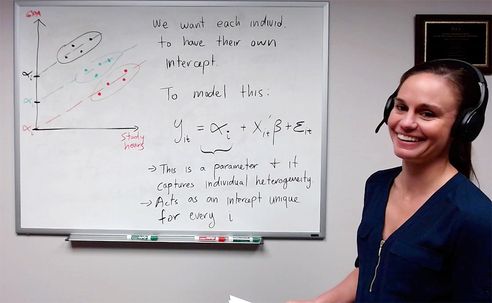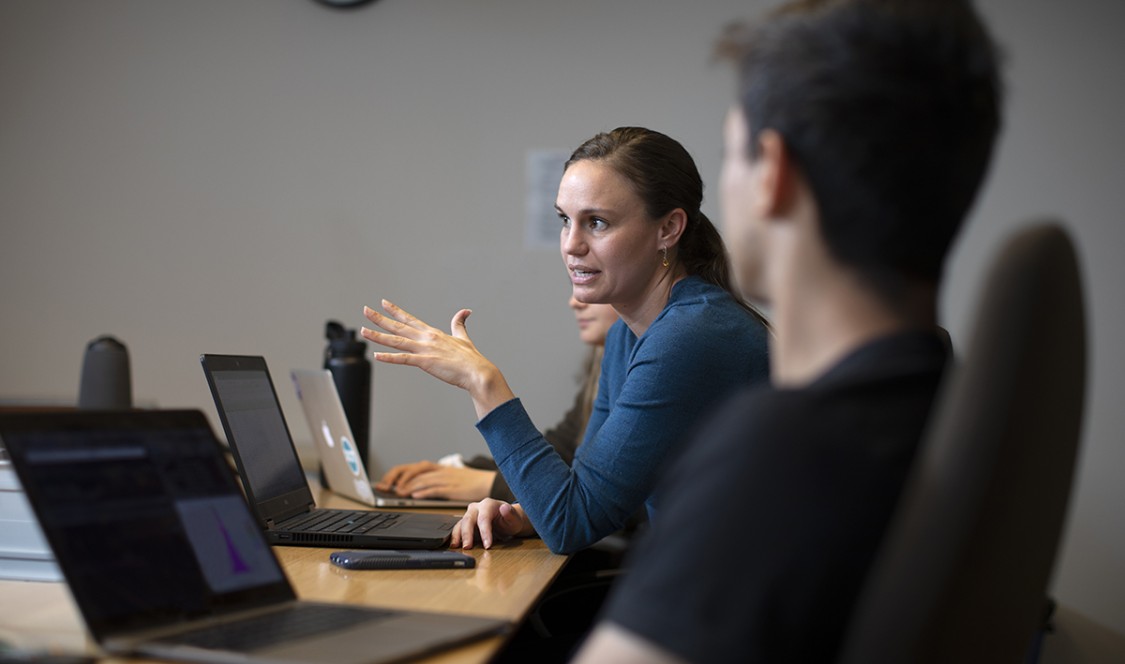Across the CMC curriculum, members of our faculty are meeting the challenge of these unprecedented and historic times, delivering exceptional coursework in a fully online modality for the fall semester. In our Academic Innovations series of faculty Q&As, professors share their curricular highlights, best practices, and how students are helping to shape virtual learning for a memorable, collaborative academic experience.
Angela Vossmeyer, assistant professor of economics and a faculty research fellow at the National Bureau of Economic Research (NBER), is teaching two courses this fall, “Econometrics” and “Advanced Projects in Data Science.”
What learning opportunities are you seeing as a result of this crisis?
This pandemic is a one-of-a-kind learning opportunity. There is no better time than now to understand data and statistical modeling and their implications for shaping health and economic policies. Every day, we are looking at infection spread data and case counts. We read in the news about predictions and forecasts of where these data are headed. Applying econometrics will give students a better understanding of why some predictions are more accurate than others and why some models are failing.
Because we’ll be meeting in smaller groups in the new format, one of my goals is to find out which specific elements and fields of economics interest my students. Then I can tailor the applied exercises to their particular interest.
The smaller student group setting in “Econometrics” will also allow me to introduce data science competitions where students can win extra credit. The students will get their hands dirty with data and construct statistical models for out-of-sample prediction, allowing them to better understand the implications of econometric methodologies.
What are some ways you are reimagining your courses for the fall?
I’ve modified to a flipped classroom strategy, prerecording my lectures and meeting separately with students. One nice outcome of the student meetings will be that I’ll get to know my students more intimately and get to work with them more closely on the applied data exercises.

There are aspects of this revamped approach that I’m looking forward to. For instance, because I’m recording my lecture materials beforehand, I can broaden the amount of topics I can cover in a semester. Also, students can revisit my lectures as they prepare for exams, pause them or even accelerate them, depending on what they need. Students are going to have a lot more control over how they absorb the material.
Additionally, the way I will assess students will change. There will be no more big exams. We’ll do a lot more team projects, small group discussions, and mini quizzes, which are less intimidating.
In teaching “Econometrics,” we do a lot of statistical theory and applied data exercises. When we are in-person in the classroom, I need to have a computer screen and so does the student. Now, it’s going to be easier because we are already going to be on our computers. It will be very easy for me to screen-share and give additional direction on those exercises. That’s something that’s going to be a lot more fluid in the online format versus the in-person format.
What discussions are you having with students and colleagues? Has that shaped or influenced how you are thinking about your courses?
My spring semester students gave me a lot of feedback. My research assistants also provide me with insights into student life, and share with me what students are concerned about. I learned that students are stressed about their home environment and finding space that is quiet and uninterrupted. This semester, I’ll work to reduce this stress by switching to shorter assignments and shorter synchronous meetings.
I’ve also gained a lot from conversations with faculty. The pandemic hit the spring semester so fast that we all implemented different methods to get through our courses. Doing that, we learned things that worked and those that didn’t. We can implement what worked well. As we push toward the fall, I’m learning quite a bit from my colleagues.
Click here for a full list of curricular innovations from CMC faculty in the fall.
—Anne Bergman

